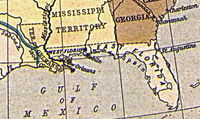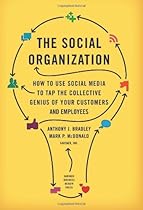At a recent dinner party, I was speaking with a friend who had just been promoted to vice president at a well-known New York hedge fund. The promotion was unexpected, involved an immediate 50% pay raise, and came with broad new responsibilities. When he should have been feeling optimistic and excited about his new position, why did he look like the unhappiest person in the world?
This isn't uncommon. In the course of writing Passion & Purpose, I was fortunate enough to meet and interview hundreds of young leaders, many of them "rockstar" twenty-somethings who command high six-figure salaries, are in stable relationships, and have all the career options in the world. Yet, when I asked them whether they were following their passions — really doing what they loved — they would soon describe how they actually felt about their seemingly perfect lives: lost, hesitant, and uncertain. One respondent summed it up by saying, "I don't know what I want to do, but I know it's not this."
Many of those I interviewed echoed her sense of hollowness, a sense that seemed to be largely career- and situation-agnostic. This set up an intriguing puzzle: With all the ambition, choice, and ability in the world, why are these young leaders getting swept away in an undercurrent of unhappiness and anxiety?
The answer is both surprising and unique to this generation. Young leaders face three main threats to their sense of happiness and well-being.
First, they realize that large companies aren't safe options anymore. Gone are the days where working for LargeCo meant a career for life. After the financial crisis, the large-scale, immediate layoffs at financial institutions and large corporations shattered prevailing expectations of job stability. As a result, many are becoming hesitant of the promises made by large companies, instead choosing to pursue careers in the family business or in government. The latest round of 75,000 Wall Street job cuts will only add to this looming feeling of insecurity.
Second, Facebook and social networks are increasing anxiety. This is a generation of social media junkies — they're on an average of 2.4 social networks, with 28% getting their first Facebook hit before even rolling out of bed. As Facebook gets better at connecting the world, it has become much easier to peer into one another's lives and see what others are doing. As one investment banker put it: "Hearing about everyone's exciting new jobs on Facebook makes me dread going to work even more." This increased sharing and personal transparency is not just a privacy issue; it's causing everyone to (consciously or subconsciously) compare themselves ever more frequently to friends and peers. This is problematic, since studies have repeatedly shown that comparing yourself to others is a primary source of unhappiness.
Finally, young leaders have more career choices than ever. Their parents sent them to college in droves: 54% of Millennials have college degrees, compared to 36% of Boomers. Of course, parents did this so their children could have more options. But is having all the career choices in the world unequivocally a good thing? Barry Schwartz, author of The Paradox of Choice, would say no. Through my interviews, I saw that the bewildering array of professional options open to today's young leaders is forcing them to focus on "optimizing" choices, which can be an excruciating exercise and added stress, especially as the list of available options gets longer. It puts the focus squarely on making the "right" decisions, with their parents looking hopefully (or sternly) over their shoulders. For a young leader, this pressure only heightens feelings of insecurity about whether or not they've walked through the "right" door and makes them more afraid to fail.
But there is good news. Individuals can overcome these new threats. If you're a young, ambitious individual feeling hesitant and hollow, here are three ways to combat those pesky doubts:
- De-emphasize prestige and compensation. Money is important, but not at the cost of doing something you love. Taking a job just for the plush office and expense account might be a short-term strategy that compounds feelings of unhappiness further down the track. Without a doubt, the individuals I met who emphasized meaning over money tended to be happier overall than those who didn't.
- Start experimenting. Commitment is important, but so is flexibility and intelligent experimentation. Try new things; try hard things. Ask your manager for a chance to lead a new business. Speak at an industry conference. Go on a secondment to another country. This way, you'll keep challenging yourself and avoid that feeling of being locked in.
- Spend time defining your passions. It is a difficult psychological achievement to find what we want. The pursuit itself is hard, and it takes time. Like Clayton Christensen did, spend an hour a day thinking about what things you're passionate about. You're allowed to be passionate about different things, so consider more than one option. Adopting a portfolio of passions, rather than racking your brain for that one answer, will help you move away from impossible optimization and enable you to move forward.
These are just some of the techniques I've seen young leaders adopt to move forward with confidence. With some focus and effort, there is every reason that our next generation of leaders should be happy and ready to act with purpose.
What else can you do to make your work life happier?
Daniel Gulati is a tech entrepreneur based in New York. He is a coauthor of the new book Passion & Purpose: Stories from the Best and Brightest Young Business Leaders.
Thanks to Daniel Gulati / Blogs HBR / Harvard Business School Publishing
http://blogs.hbr.org/cs/2011/11/three_ways_to_overcome_career.html?cm_mmc=email-_-newsletter-_-management_tip-_-tip022412&referral=00203&utm_source=newsletter_management_tip&utm_medium=email&utm_campaign=tip022412
| To Get Uninterrupted Daily Article(s) / Review(s) Updates; Kindly Subscribe To This BlogSpot:- http://ZiaullahKhan.Blogspot.com/ Via "RSS Feed" Or " Email Subscription" Or "Knowledge Center Yahoo Group". | ||
| Amazon Magazine Subscriptions | Amazon Books | Amazon Kindle Store |
| Amazon Everyday Low Prices, Sales, Deals, Bargains, Discounts, Best-Sellers, Gifts, Household Consumer Products | ||







